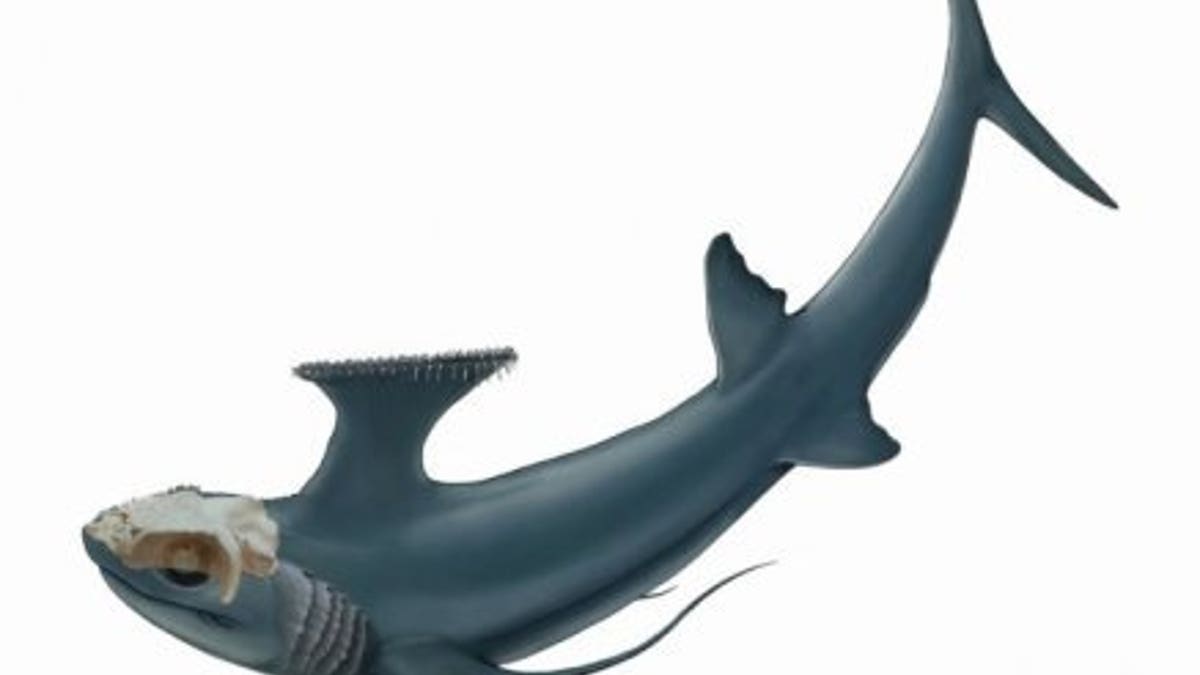
File photo - This image shows a reconstruction of Dwykaselachus oosthuizeni, a type of symmoriid shark now known to be an early chimaera. (Credit: Kristen Tietjen)
The chimaera, or so-called "ghost shark," is an elusive deep-water fish that has fascinated biologists for more than a century. Like its relative the shark, however, it's made of cartilage and thus rarely fossilizes, so little is known about its evolutionary past, reports Live Science.
Now, the blanks have been filled in thanks to a "remarkable" 280 million-year-old fossil found on a farm in Cape Province, South Africa, in the 1980s that was thought to be a symmoriid shark.
Researchers at the University of Chicago Medical Center report in a Science Daily news release that the specimen—micro CT scan images of which one reviewer describes as "dripping with data"—is actually an early chimaera, not a shark.
The specimen offers "a glimpse of the preconditions from which modern chimaeras evolved." Reporting in the journal Nature, the team says the fossil establishes strong links between the brains, major cranial nerves, nostrils, and inner ears of early and modern chimaeras.
More From Newser
We're learning more about elusive modern chimaeras, too; scientists recently said they think they've captured video of a type of ghost shark never filmed before; the Washington Post published the footage of what's believed to be a pointy-nosed blue chimaera last month.
Filmed off the coast of Central California, it's the first seen outside the Pacific waters of Australia and New Zealand, suggesting widespread populations. Scientists have yet to work out what chimaeras eat, how often they reproduce, or even how long they live.
(Researchers who filmed the ghost shark say it was down to "dumb luck.")
This article originally appeared on Newser: Fossil Fills in Big Blank About the Mysterious 'Ghost Shark'
